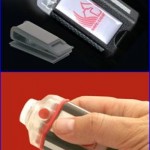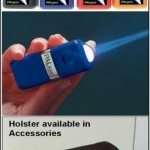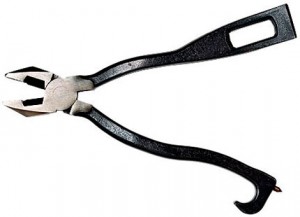What is/are the relationship(s) between the technologies pictured here? We’re not trying to be unfair, so we’ll explain that one image is of a pilot climbing into an F-16, and the other is of a whistle.
[nggallery id=103]
They differences, of course, are intuitive: The F-16, while still being manufactured for export to selected countries, is no longer being purchased by the United States military, but those still in service are intended to remain in service until 2025, which speaks volumes about the complexity of military aircraft design and the consequent length of the design cycle. The F-16 is unquestionably a weapons system or platform: there are many cofigurations of armament, electronic countermeasure, complex IFF systems (“Identify Friend or Foe,” an automated means of reducing friendly fire incidents on the one hand, and thereby permitting faster action by pilots who are, by using IFF, at less risk of accidentally attacking an ally, a colleague, perhaps even a friend and comrade); training is complex and demanding; because of its complexity and maneuvering ability, the F-16 is unforgiving of error.
The whistle, the WW-3 Res-Q™ Whistle, has a single function: to call for help and direct help towards the signaler (so perhaps two related functions), and its characteristics include:
- Loud, shrill, dual tone audible from great distance
- Unique flat design prevents holding water
- Required by SOLAS 83
- Meets USCG/SOLAS requirements
- Aids in land or sea rescues
- Use on life jackets, vests, foul weather gear, ring buoys, rafts, keychains, etc.
- Developed for the U.S. Navy; used by NASA, major airlines and shipping companies
- Complete with 18-inch (45.5 cm) lanyard
Its only safety defect is its greatest virtue: users and persons near them may experience discomfort or transient hearing loss because it is so loud. It’s simple to operate; as Lauren Bacall said in the film Key Largo,
“If you want me just whistle. You know how to whistle don’t you? Just put your lips together and blow.”
Lauren Bacall, The Complete Films of Humphrey Bogart; found at Lauren Bacall Quotes Page, via GoodReads.com
So what do they have in common?
- The same parent company, Cobham plc, makes both components and subsystems for the F-16 and other very complicated pieces of tech costing millions of dollars, as well as the Res-Q-Whistle, which often retails for under $3 USD. It’s hard to imagine that there’s much of an economic motive for Cobham in selling these whistles, but we’re glad they have them on the market.
- The pilot stepping into the F-16 probably has the Res-Q-Whistle in his survival gear which, because its most likely use is after ejection and parachuting and consequently has carefully rationed space, says something about the perceived value of the whistle. Insofar as we know, the $2 whistle must be purchased separately, and is not included in the price of the more expensive F-16 subsystems and accessories.
Thanks to RFCafe.com for providing the link which led to this piece.





![Reblog this post [with Zemanta]](http://img.zemanta.com/reblog_e.png?x-id=f1b3fe4d-3e68-47c8-b3ca-a33ee3ee483d)

